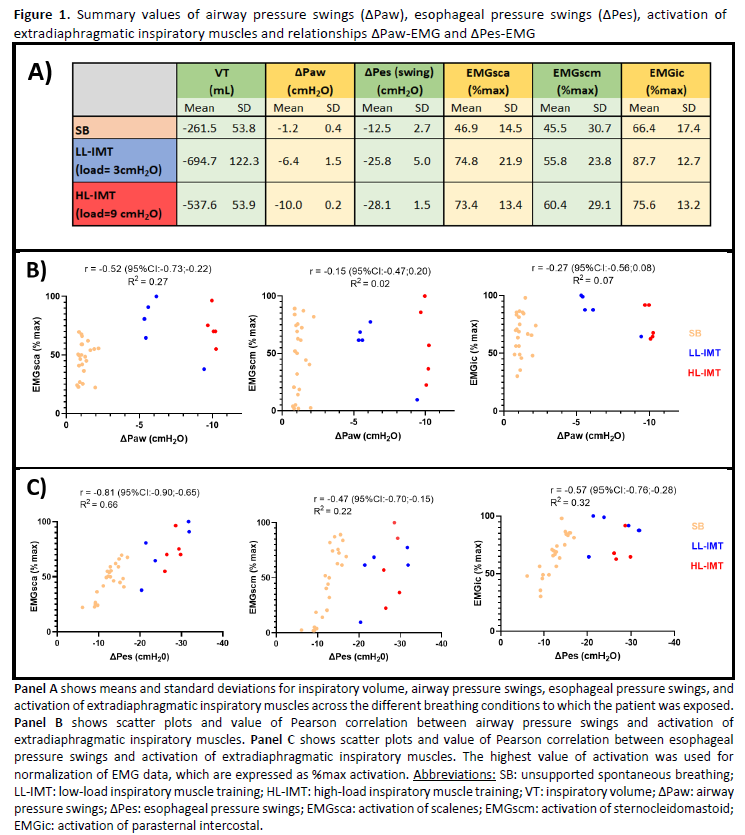Abstract
Background: It is unclear if inspiratory effort as assessed by esophageal or airway pressure swings relates with the load set during inspiratory muscle training (IMT) and how the effort is associated with activation (EMG) of inspiratory muscles in DTW patients.
Aims: To characterize the relationship between esophageal pressures (?Pes), airway pressures (?Paw) swings and EMG of scalene (EMGsca), sternocleidomastoid (EMGscm) and parasternal intercostal (EMGic) muscles in a DTW patient during unsupported spontaneous breathing (SB), low-load (LL) and high-load (HL) IMT.
Methods: A female DTW patient of 66 years with COPD, had a maximal inspiratory pressure of 32cmH2O and a FVC of 820mL. Paw, Pes and EMG signals were continuously recorded during 1min SB and during 2 sets of LL-IMT (external load=3cmH2O) and 2 sets of HL-IMT (external load=9cmH2O).
Results: ?Pes were considerably larger than ?Paw in all conditions (Fig.1A). Both ?Pes and EMG were higher during IMT as compared to spontaneous breathing, but not different between IMT conditions. ?Pes was more strongly associated with EMGsca, EMGscm and EMGic across the different breathing conditions than ?Paw (Fig.1B-C).
Conclusions: In a DTW patient inspiratory effort quantified as ?Pes was 3 to 4 times larger than ?Paw generated by external loads and better related to activation of extradiaphragmatic inspiratory muscles.
